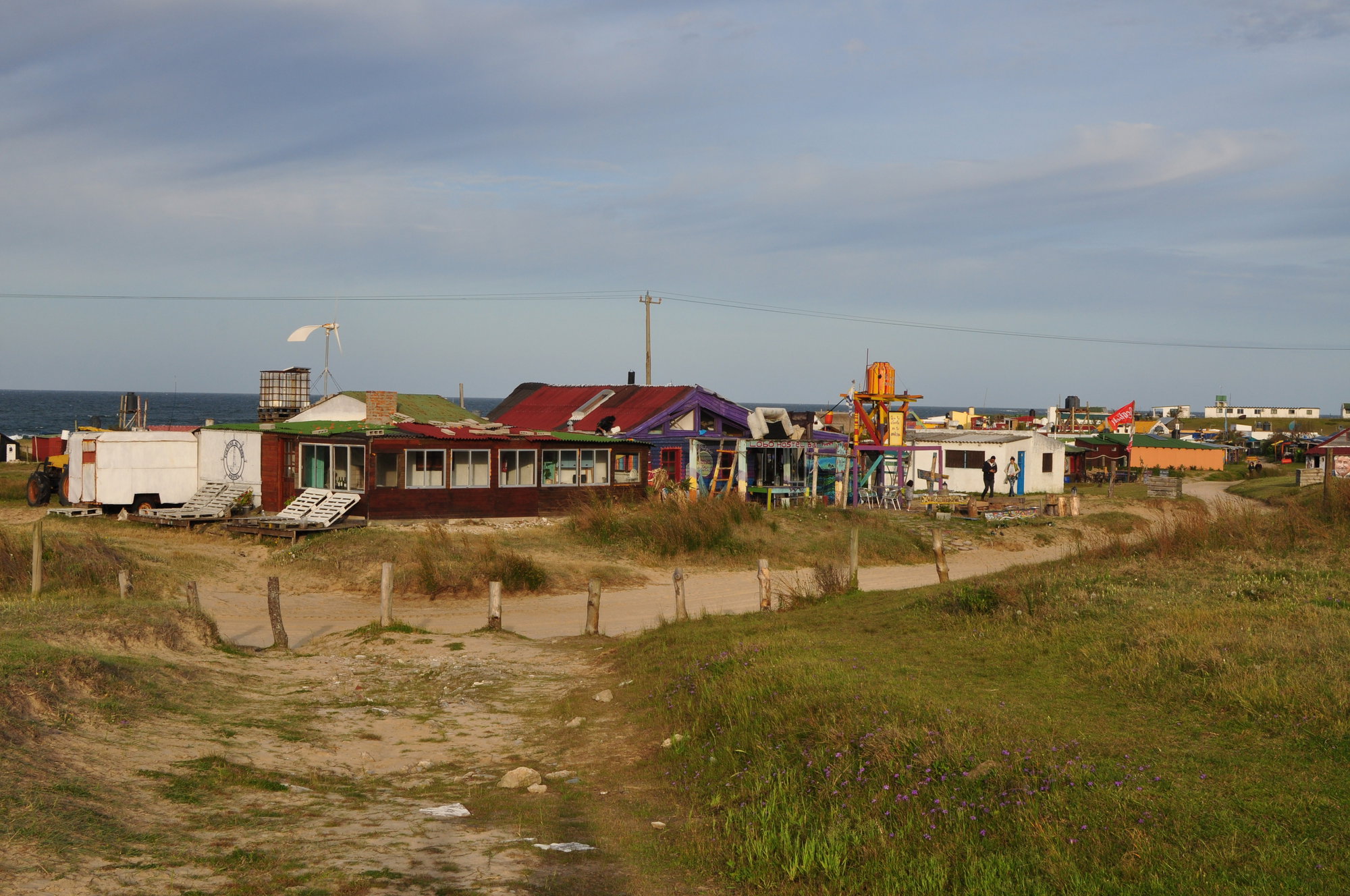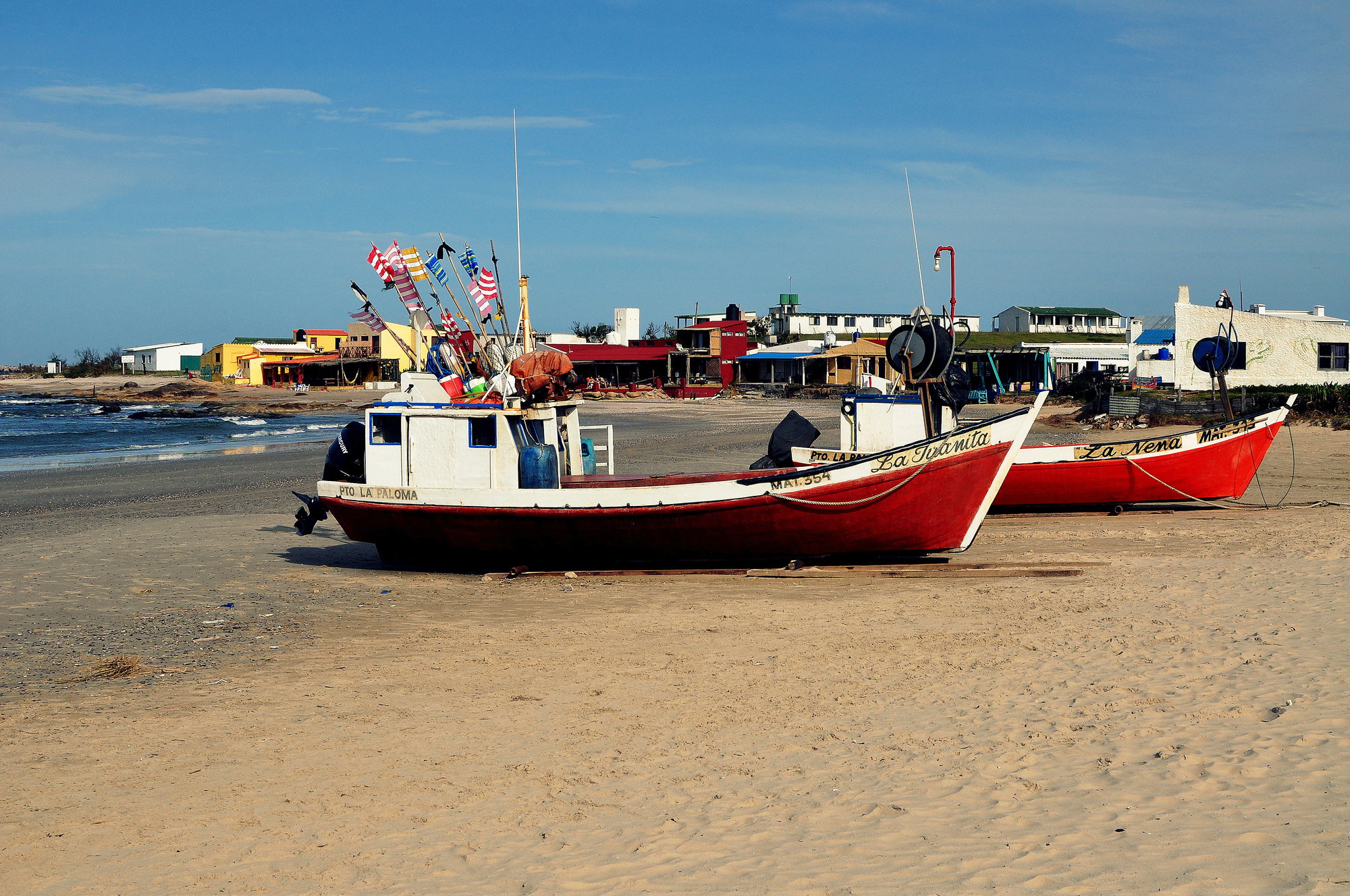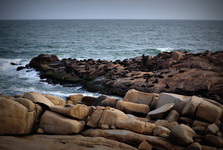Uruguay, Cabo Polonio – Beaches and Sea Lion Colonies

Cabo Polonio retains its natural heritage and since 2009 falls under the national system of protected areas. The typical features of Uruguay's Atlantic coastline, which have not been affected by urban tourism, still dominate the area. Natural diversity here forms sandy beaches, rock formations, dunes, original coastal forests, small wetlands, ocean and islands. The most important place is the moving sand dunes, the height of which reaches up to 20 meters. They are the remains of a sandy strip that has previously been stretched along the coast. There are endangered species, such as the Darwin's frog, which is an important site for migratory species - tigers, southern whales, and green sea turtle.
We did not plan to visit this place, but we received a tip from one young Uruguayan, whom we hitchhiked. And so we went out to explore the place. We were especially attracted to seeing the colony of sea lions. Private vehicles are not allowed into the place and the only means of transport is safari-style trucks. Riding a sandy path takes about half an hour and is 7 km long. If you want to save yourself, you can go this way on foot. In Cabo Polonio, only about 100 people are living permanently.
There are generators in the houses, solar panels or mills that use wind energy and convert it into electricity. At night, many use candles. Drinking water is obtained here from wells or rainwater tanks. Accommodation options are simple and there is a ban on camping.
Besides many hostels and hotels, there are restaurants and bars in downtown. The main season of coastal tourist destinations in Uruguay is in the summer, beginning in late December and ending in March or April. We are lucky enough to get here in front of the main season, so there is no crowds of tourists plus there is no problem in finding some accommodation. Even though we would expect the place to be more tranquil,, people are still enjoying themselves in the evening and our beds are shaking again with loud music.
There are two beaches in Cabo Polonio - La Calavera and Sur beach. La Calavera is bordered on one side by sand dunes and on the other side of the rock. The lagoon boats are "La Nena" and "La Juanita" and there are restaurants on the rocks. Interestingly, you can walk along the beach to the rocks, but as soon as the tide comes, the water reaches up to the restaurants and you will not be able to go through here.
We continue along the beach to the rocks and the main icon of Cabo Polonio lighthouse. It was declared a historic monument in 1976. The lighthouse, built in 1881 and reaching a height of 40 meters, was essentially a must, because it was very difficult for boats to cross the rocky shores without damage.
What lured us to this place the most was the observation of a large colony of sea lions in their natural environment. There are even a couple of colonies of two species - the South American sea lion and the Patagonian sea lion. They stay on the rocks near the lighthouse, so just sit down on some stone and watch them being lazy on the rocks or playing. And when the wind blows from the sea, you can not miss the colony simply because of the animal odor that comes from them.
Cabo Polonio is definitely the place to visit. If you like peace, go out of the high season and enjoy the tranquil beauty of the local environment.
GPS: 34°24'15.1"S 53°46'41.7"W
Text and photos: Tomáš Novák
| Discussion at the article (0) |
Related Articles

Uruguay, Carmelo – We Discover Another Latin American Country

Uruguay, Santa Teresa National Park and Old Fortress

Brazil: From Uruguay to Porto Alegre

Uruguay, Colonia del Sacramento – Historic Place
Guide:
Important Information:
![]() Information and warnings on travelling abroad is to be found HERE.
Information and warnings on travelling abroad is to be found HERE.

































